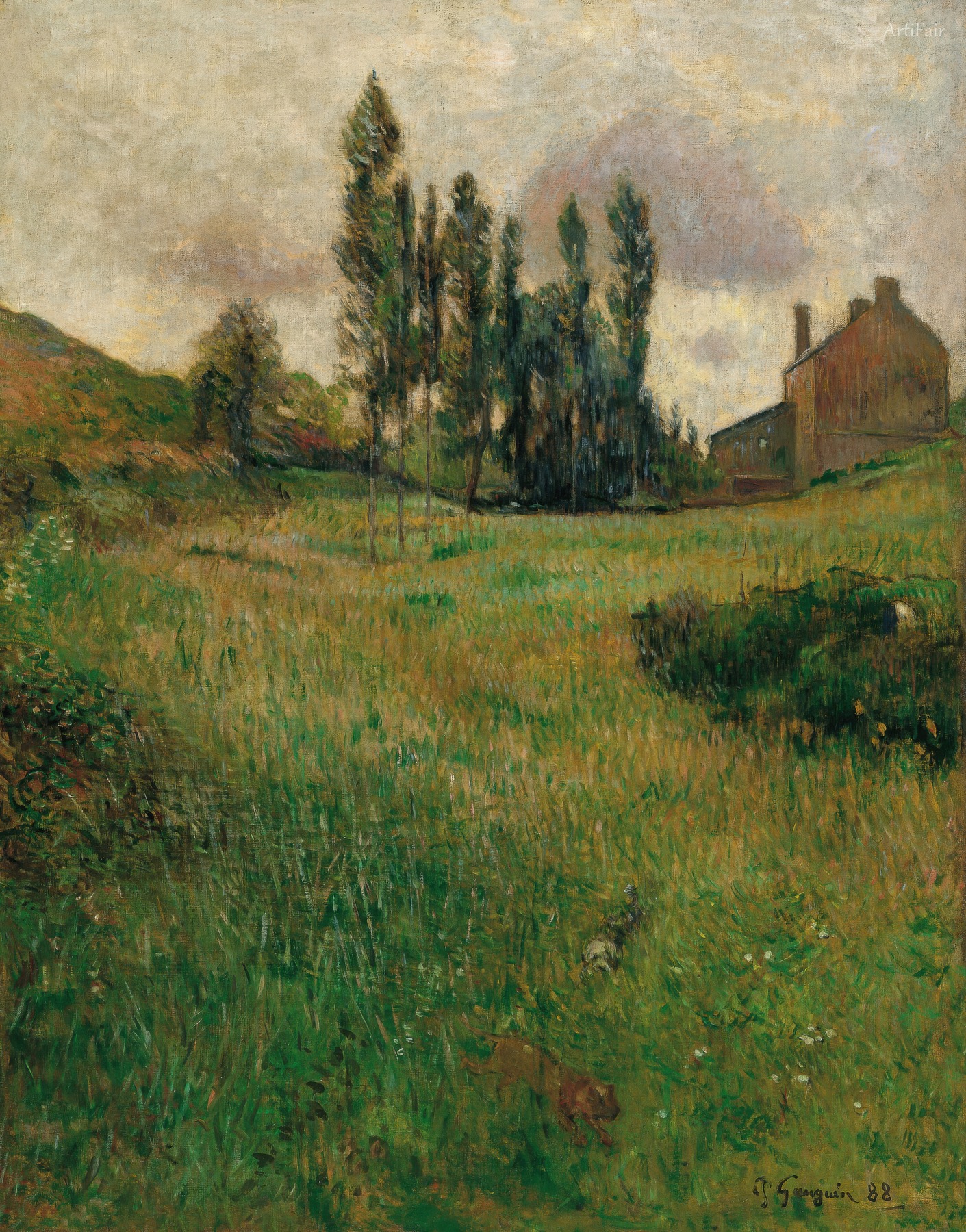
Art Appreciation
The painting presents a serene rural landscape where a meadow stretches expansively under a cloudy sky, rendered with sweeping, textured brushstrokes typical of late 19th-century Post-Impressionism. Tall, slender trees cluster toward the horizon, drawing the eye upward against a muted, overcast sky that carries a tinge of melancholy. The field’s lush greenery is punctuated by subtle variations in color and texture, suggesting breezes moving through the grass and the natural disorder of a meadow untouched by human control. The presence of two dogs—small but clearly discernible—adds an element of life and movement to the otherwise tranquil scene, their dark forms contrasting gently with the verdant surroundings.
The composition is balanced yet informal, inviting the observer to feel absorbed into this quiet moment of nature. The artist’s use of color is both earthy and rich, with greens dominating but interspersed with ochres and browns that hint at the fading warmth of late summer or early autumn. There is an emotional tenderness here, evoking a wistful appreciation for the simplicity and beauty of the countryside, far from urban bustle. Historically, the painting captures the artist’s exploration of rural environments during a period when industrialization was rapidly changing the landscape of Europe, rendering this scene both a celebration of pastoral life and a subtle meditation on change and continuity.